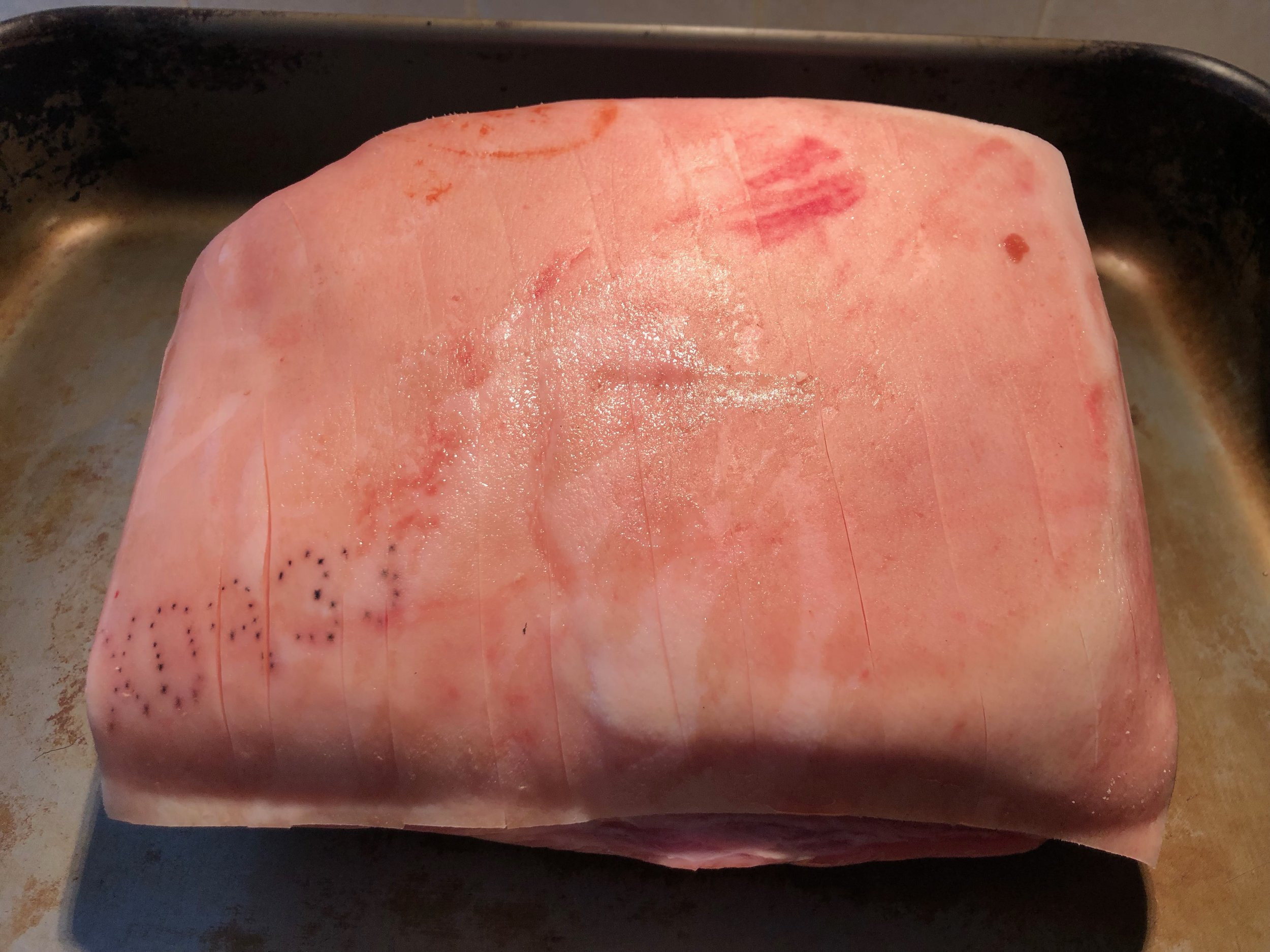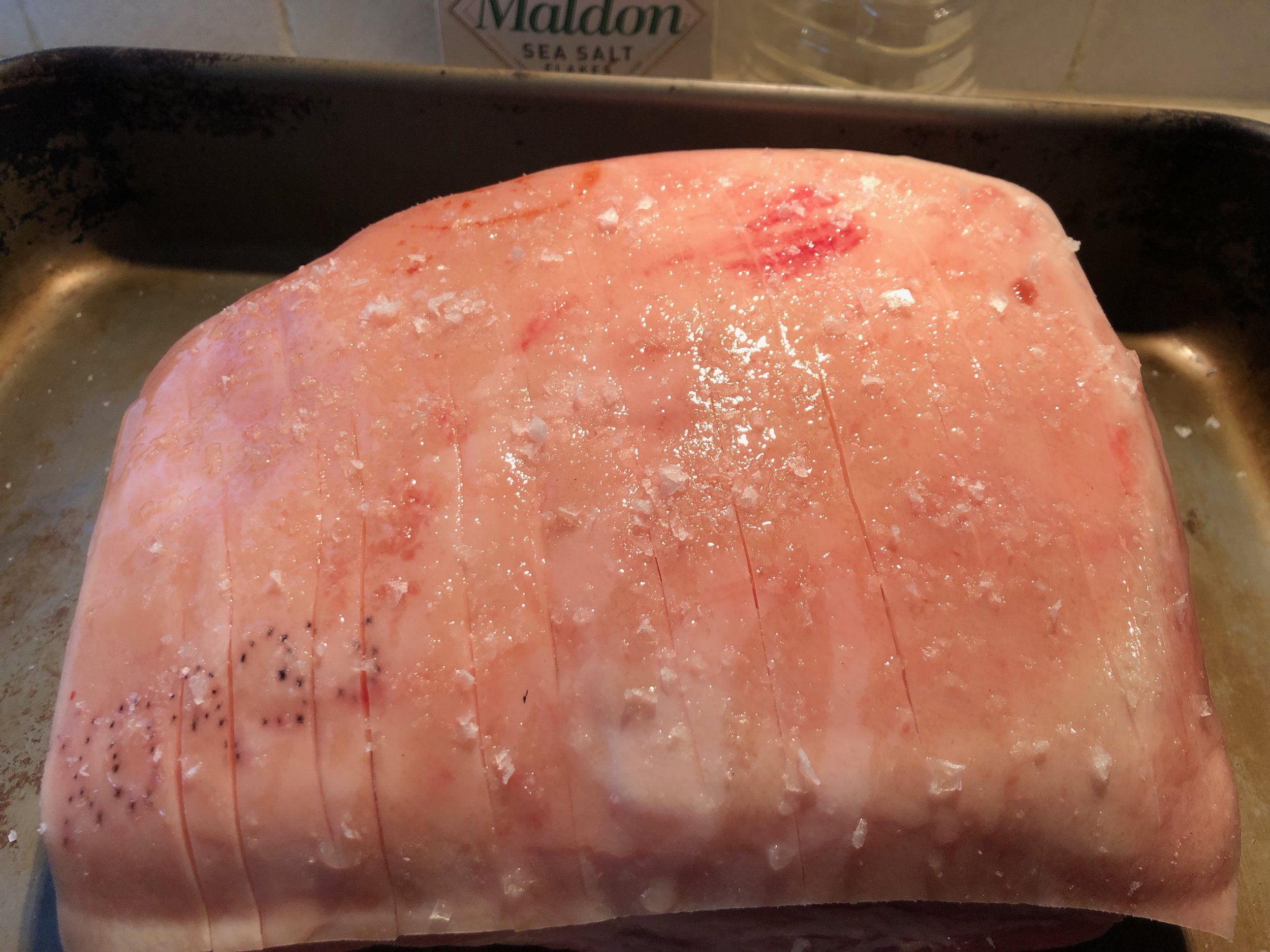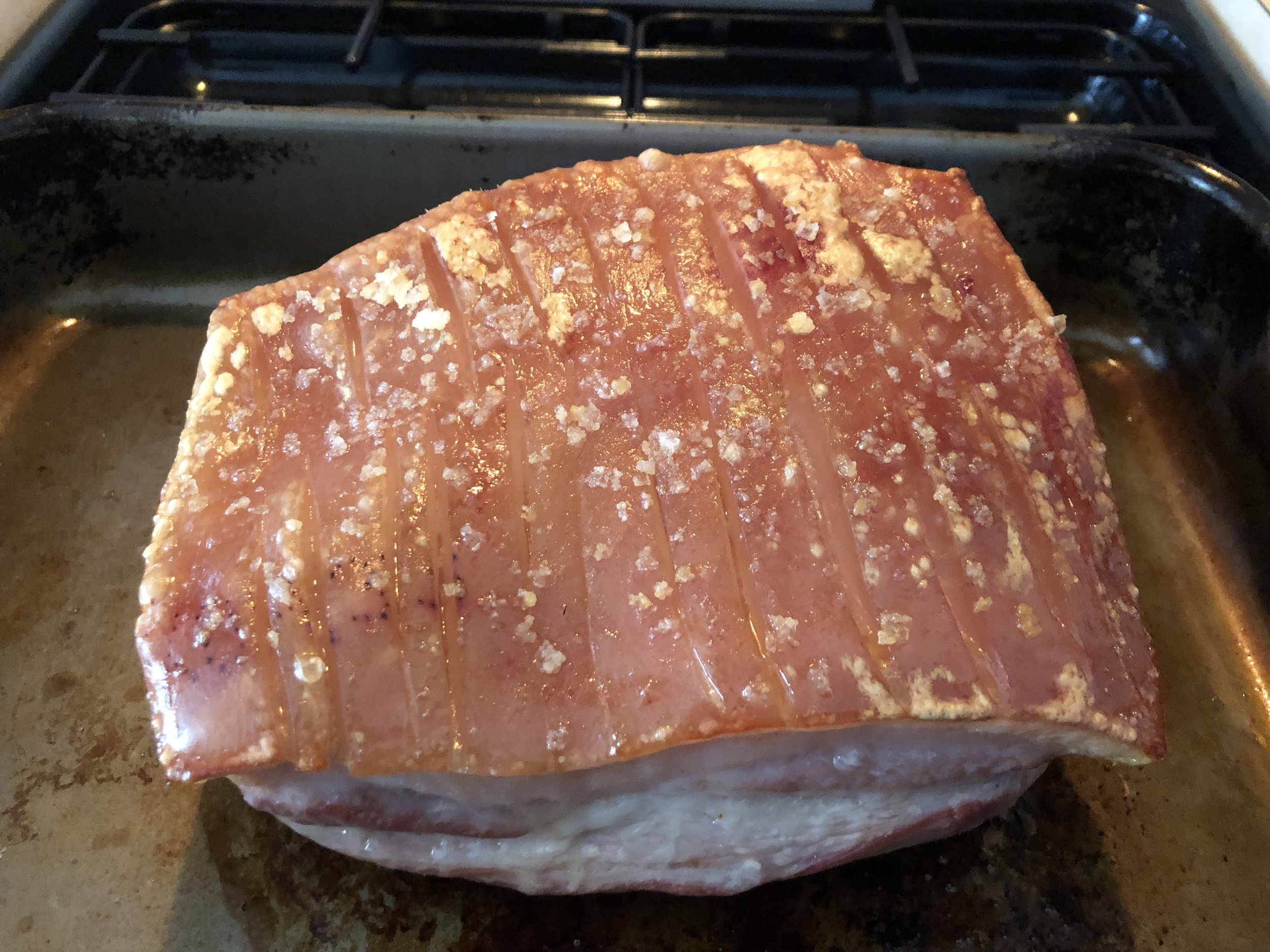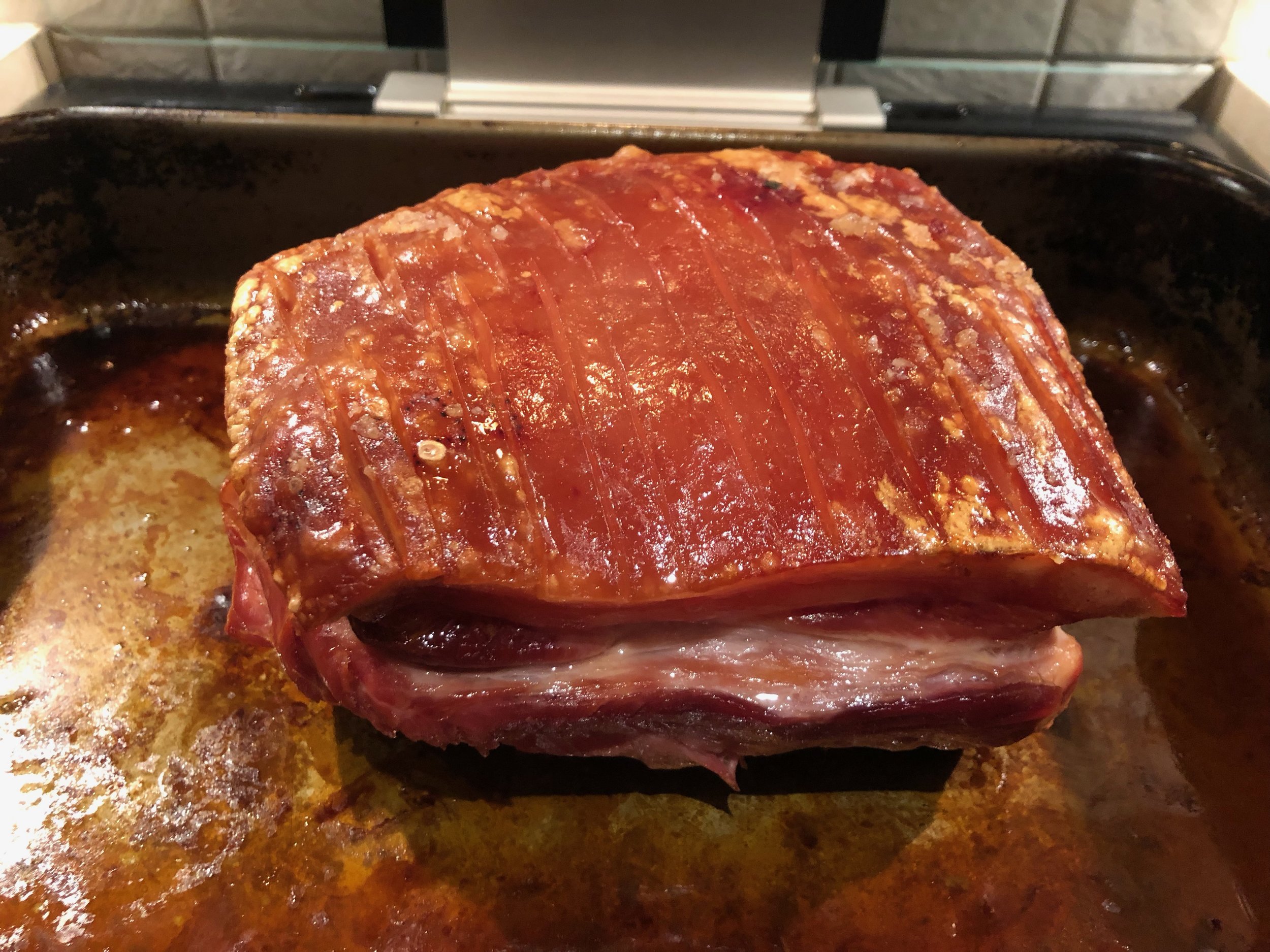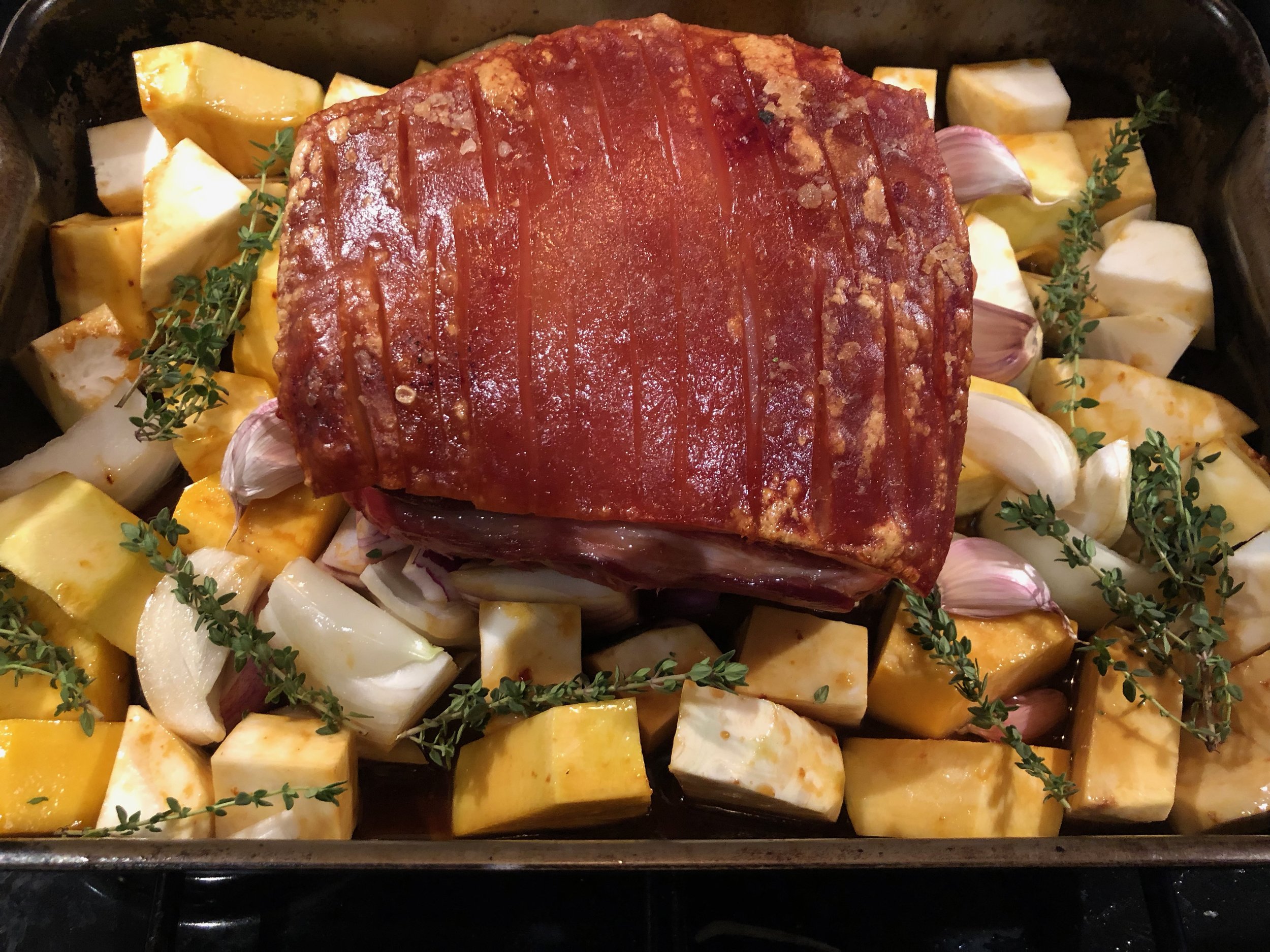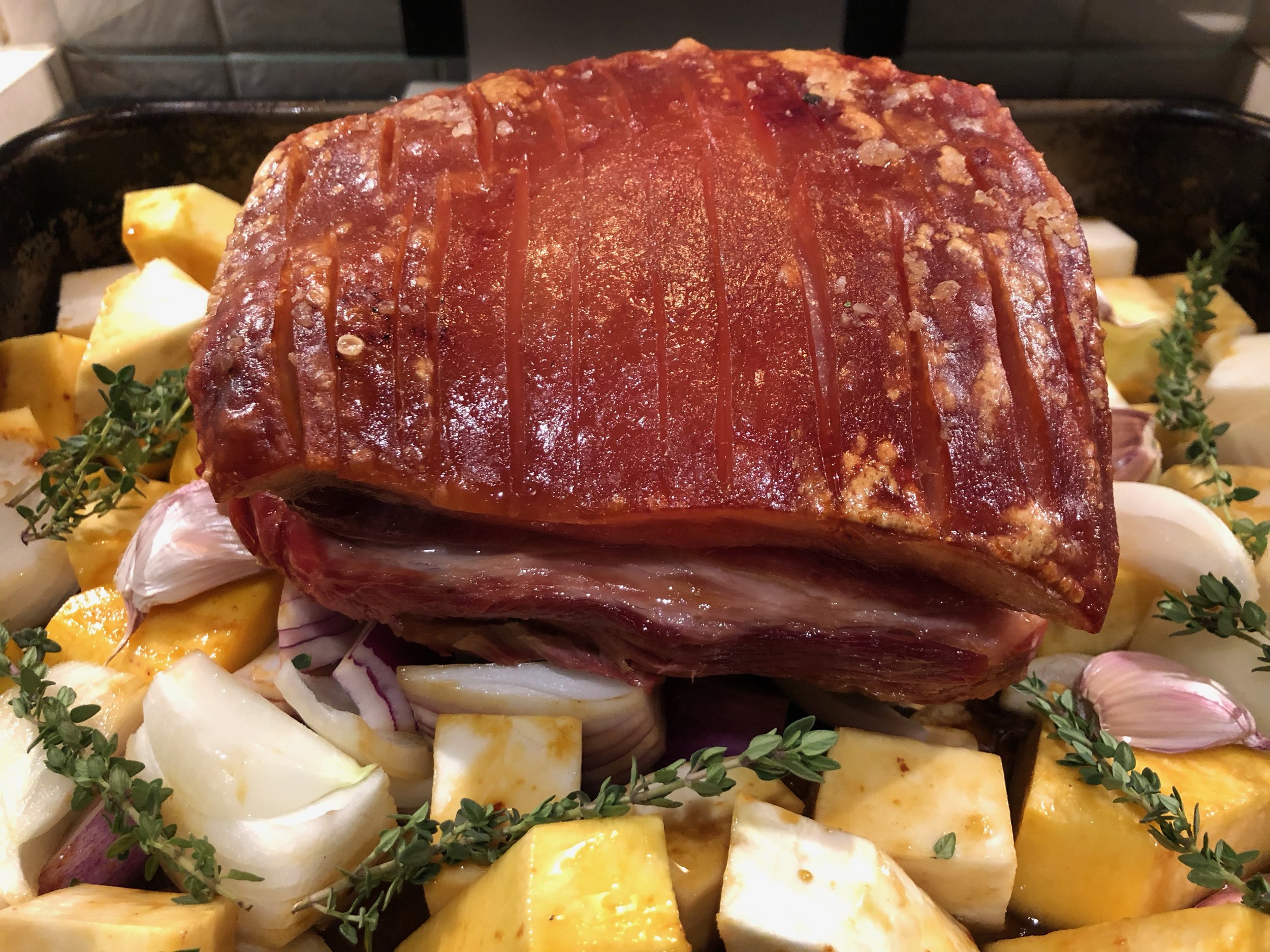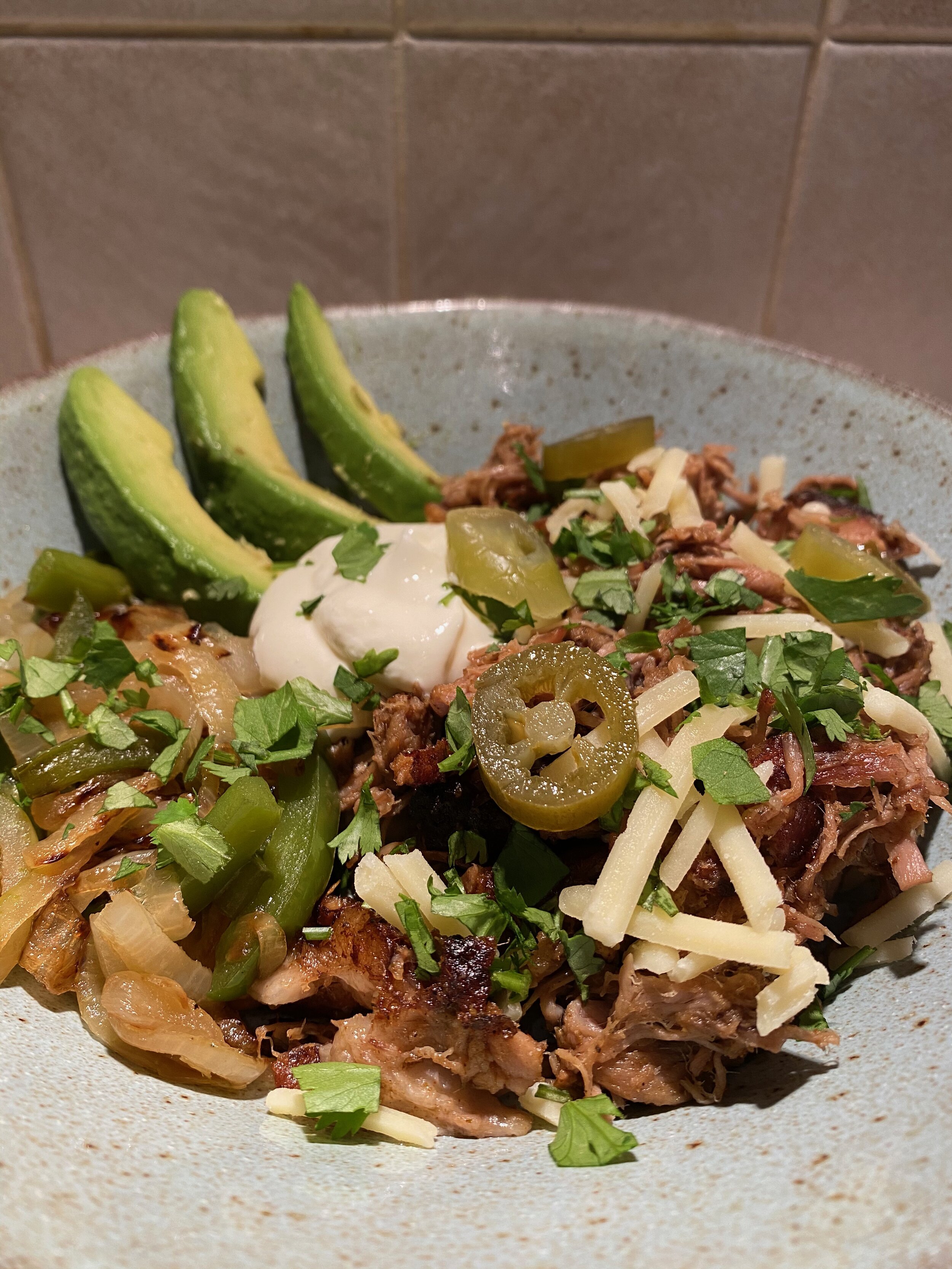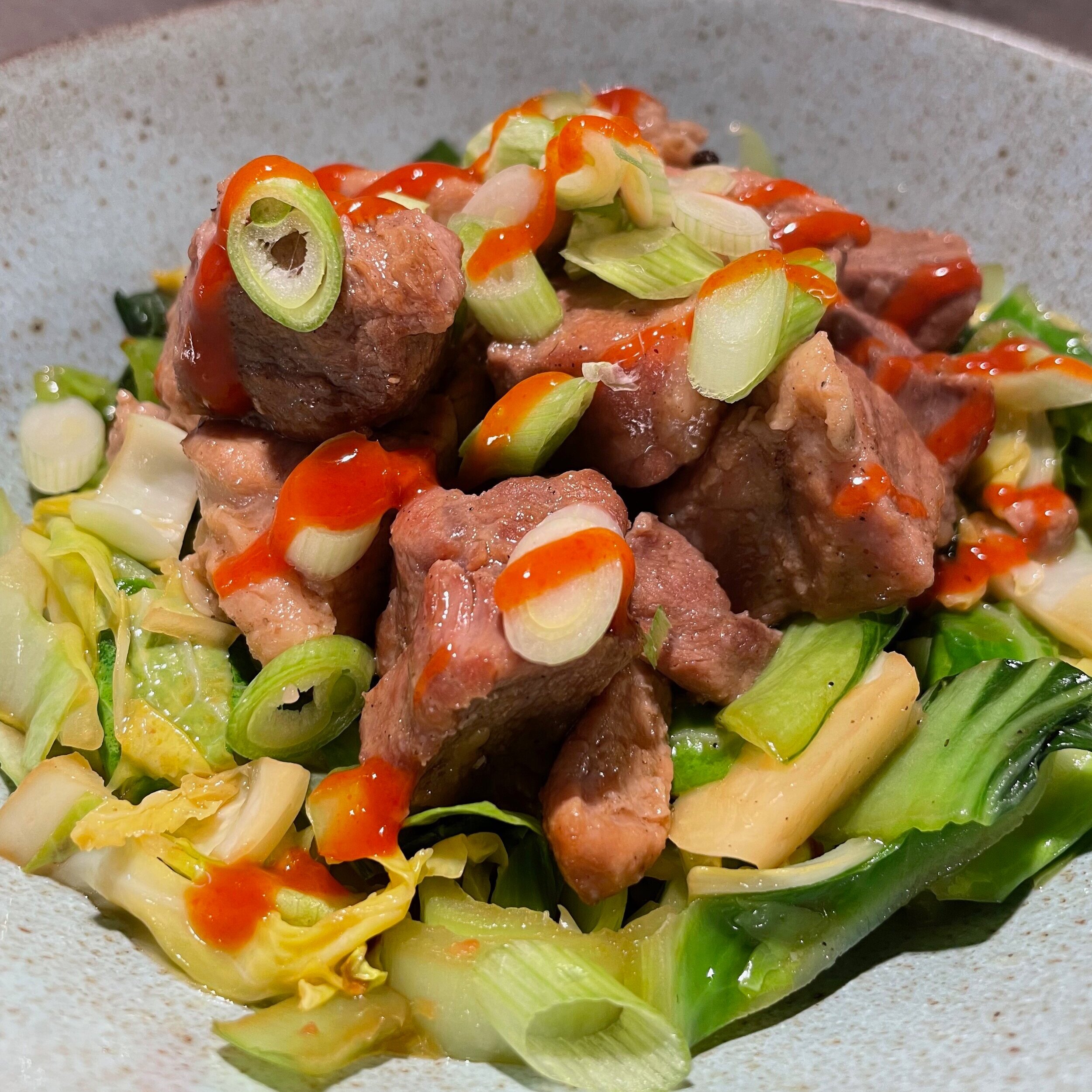Slow-roast pork shoulder
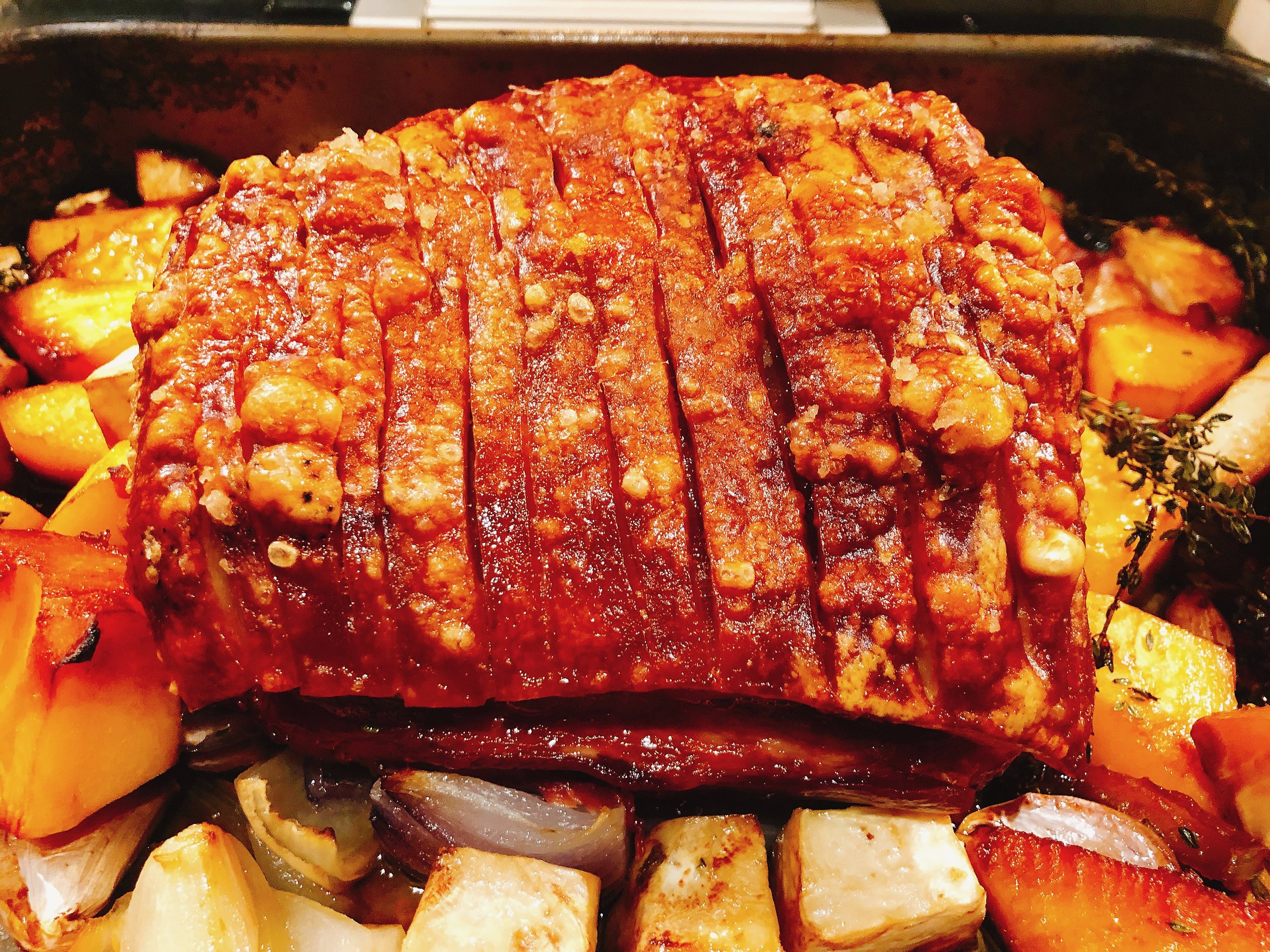
Is there such a thing as a fool-proof method for pork crackling? I have tried many over the years, and have yet to be 100% successful. There are a few common denominators in all of the methods - decent pork; a good score on the skin down into the fat; no moisture; and a high heat at some point during the cooking. A prayer to the cracking Gods doesn’t go amiss either!
I am in favour of Hugh Fearnley-Whittingstall’s method of roasting meat as found in his excellent book - Meat. The joint gets an initial high temperature blast, knock it down to a cool oven and slow cook, then give a blast at the end to seal the deal.
For this recipe I chose a cut on the bone - shoulder blade in this case. Cooking on the bone gives more flavour to the meat, and you will have no worries about carving, the bone pulls out clean and you can cut into chunks.
If you like the simplicity of a slow-roast, a little up front work, then leave the dish to develop over a number of hours - check out other dishes such as a slow roast lamb shoulder, lamb kleftico, beef brisket or oxbeef stew. Of course it doesn't have to be meat either, slow-cooking works equally well with aubergines!
Step 1 - Prepare the joint
Heat the oven to 220C / Gas 7
Dry the skin of the meat well with kitchen roll
Even if the butcher has scored it for you, best to go over again with a small sharp knife, and open up the cuts once more
Put the joint into your roasting tin and test that it will fit in the oven
Rub the skin all over with vegetable oil
TIP: not olive oil as you need an oil that will stand a high temperatureSprinkle generously with sea salt
Pop in the hot over for 30 minutes, listen for the pops and crackles!
Step 2 - Slow it right down!
Take the meat out after 30 mins and turn the oven down to 160C / Gas 3
Cover the meat and pan completely with tin foil
Put back in to the cooler oven for at least 4 hours
Step 3 - Prepare the veg
Cut the onions into chunks - eighths are good
Peel and chunk the root vegetables
Break the garlic apart, but no need to peel the cloves
Step 4 - More cooking
Take the meat out and remove the tin foil
Take the meat out of the pan and on to a board or plate
TIP: use a fish slice and tongs. The meat will be so tender it may break apartTip off all but 4 tablespoons of fat
Tip in the veg and toss in the juices
Rake the onions into the middle of the pan and sit the meat back on top
Put back into the oven, uncovered, for another hour
Step 5 - Did it crackle?
Take the meat out and assess your crackling situation
Do you have good crunchy crackling all over? If so, well done - serve!
If not you have a few options
a) turn the heat back up to 220C / Gas 7 and put the meat back in for 30 minutes. Be careful of the veg, you may need to put the meat into a separate tin and do this step so you don’t overcook the veggies
b) put the grill on high and give the skin a blast
c) carefully strip the skin off the meat and do either of the above
The pan juices will make a lovely gravy if you tip in a bit of flour, deglaze with white wine and boil up with some chicken stock.
Roast pork shoulder with root vegetables
2kg bone-in pork shoulder, skin on and scored
Vegetable oil
Sea salt
2 red onions
Root vegetables, whatever you have on hand or like, for example two of any of the below
3 carrots, peeled and cut in half lengthways
3 parsnips, peeled and cut into thick batons
1 large swede, peeled and cut into generous chunks
1 celeriac, peeled and cut into chunky strips
Half a bulb of garlic
Sprigs of fresh thyme

